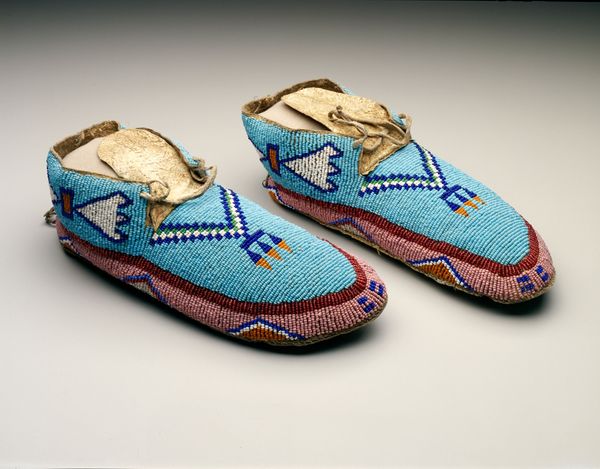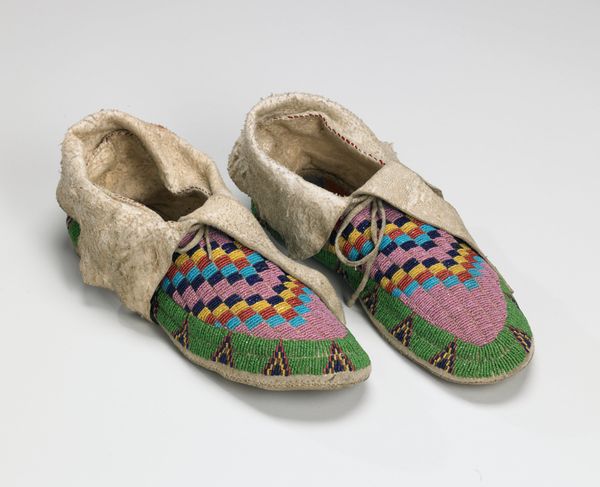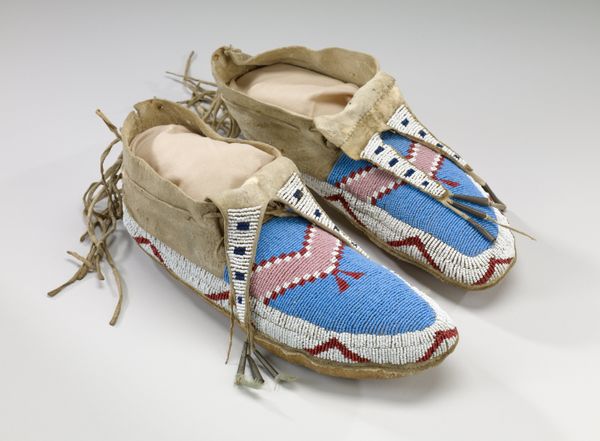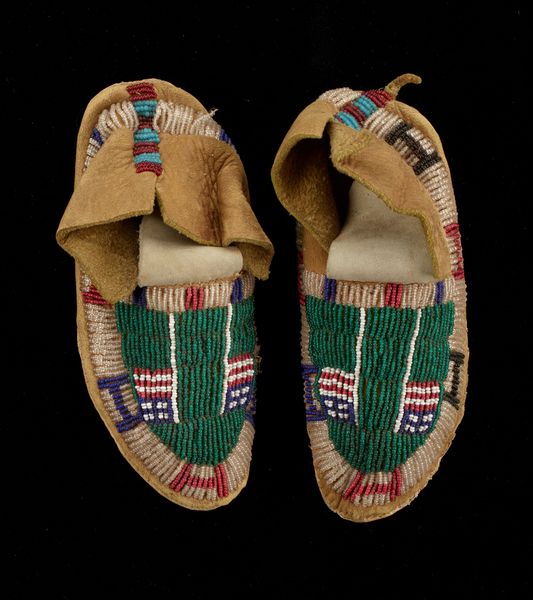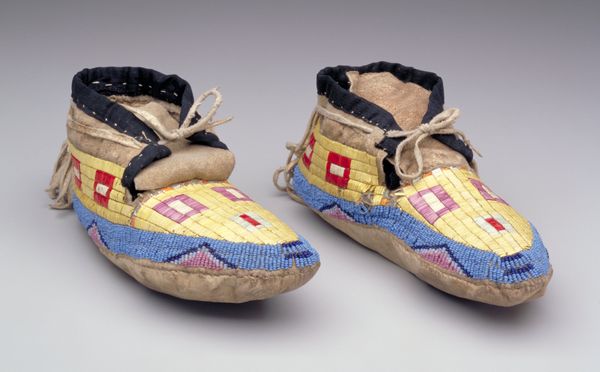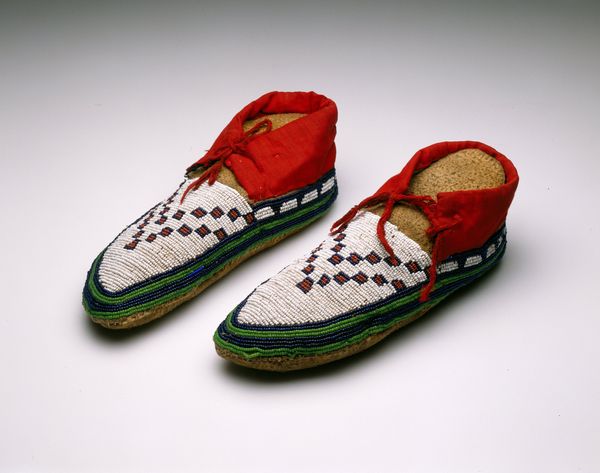
fibre-art, textile
#
fibre-art
#
textile
#
indigenous-americas
Dimensions: 3 x 3 x 9 1/2 in. (7.62 x 7.62 x 24.13 cm) (each)
Copyright: Public Domain
Curator: We are looking at a pair of moccasins, created around 1890 by an A'aninin (Gros Ventre) artist. These incredible examples of Indigenous American artistry reside here at the Minneapolis Institute of Art. Editor: They’re striking. The intricate beadwork, predominantly a vibrant sky blue, gives them an almost ethereal quality. And that the leather underneath still remains after so long just makes you wonder what stories they could tell if only artifacts could talk. Curator: Indeed. The use of trade beads here tells us a lot about the interactions and exchanges occurring at the time. Glass beads weren't native to the Americas. The introduction of new materials was disruptive and fascinating—impacting Indigenous artistic expression as it incorporated these external forces. Editor: I see the influence. And the moccasins don't feel solely ornamental, which prompts questions about their societal and cultural functions. Were they everyday footwear, reserved for special ceremonies, or meant for someone of status? What considerations of gender, power, and access did its production encompass? Curator: Exactly! While the geometric designs may appear decorative, they carry symbolic meaning rooted in A'aninin tradition, but some external meanings or visual associations from trade were inevitably absorbed into those belief systems, subtly shifting what it meant to see them in that society at that time. And these geometric shapes serve a practical purpose, reinforcing seams and potentially reflecting tribal identity or personal stories. Editor: Looking closely at those details, the fine lines, and that range of carefully stitched colors, all made from tiny individual beads; I get the impression this piece embodies dedication, skill, and deep cultural knowledge. Curator: Absolutely, understanding that the context and production are woven into every bead, reveals the piece not only as material object, but an object that is a repository for values. They encourage dialogues about colonialism, cultural change, and Indigenous perseverance. Editor: Yes. It's important to remember that even seemingly simple objects hold the echoes of a complicated, and ongoing history. Thinking about whose hands and bodies may have worn those makes me reconsider whose histories were elevated and suppressed. Curator: Thank you, looking closely at works such as these allow the many rich facets of global history to reveal themselves, creating pathways to reconsider established colonial histories. Editor: This examination helps ensure these beautiful cultural products maintain significance today, opening access and representation for global dialogues of the future.
Comments
No comments
Be the first to comment and join the conversation on the ultimate creative platform.

